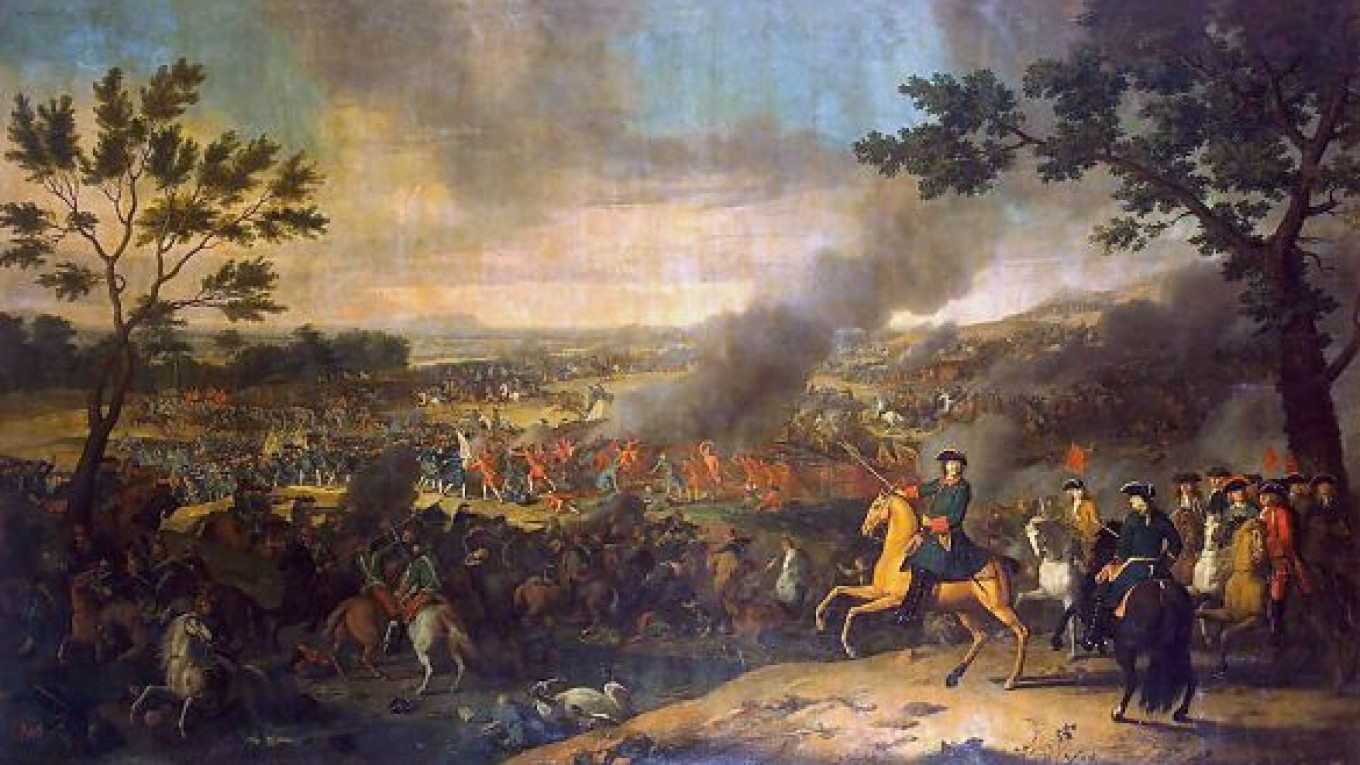Three hundred years ago, a Russian leader and his army faced off against a major European power. The victory for Russia and Tsar Peter the Great against the Swedish army at the battle of Poltava in Ukraine ensured Russia’s place as the northern power in Europe and access ever since to the Baltic Sea.
The Kremlin plays host to an exhibition devoted to the 300th anniversary of the battle bringing together a fascinating collection of artifacts from that time and even from the battlefields of Poltava itself. Apart from the Kremlin and the Hermitage Museum in St. Petersburg, 17 museums, libraries and archives have lent material for the exhibition that will remain on show until March 10.
The exhibition is spread over two halls, one decked in red for Russia and one in green for Sweden.
“Our aim was to collect all the things connected with the Northern War. That’s why so many museums took part in the project” said Viktoria Pavlenko, curator of the exhibition, adding that most of Peter the Great’s important belongings connected with the war are on display.
Among the items on show are the coat of the defeated Swedish King Charles XII, which was brought from Stockholm, as well as his bible which was found on the battlefield. There are also Swedish army drums, weapons and flags — trophies placed in the Kremlin Armory on Peter I’s orders after the battle.
The Northern War lasted 21 years and was a battle between four leaders, Charles XII of Sweden on one side, and on the other Peter the Great, Augustus the Strong (king of Poland and elector of Saxony) and the Danish King Frederick IV. The sapphire that Peter the Great gave to Augustus the Strong is on loan from the Dresden State Art Collections and is displayed at the exhibit.
Pavlenko said it is a real picture of the friendship between the two leaders. “It’s being shown in Russia for the first time,” she said.
The exhibit finishes in January 1710 when Peter the Great ordered grand celebrations in honor of the decisive victory. Coins were struck in honor of the victory and a four-meter-high triumphal pillar that has the history of the Northern War written on it. The pillar, on loan from the Hermitage Museum, is displayed in the Uspensky bell tower.
“The Decisive Battle. The 300th Anniversary of the Battle of Poltava” runs till March 10 in the Kremlin. Metro Borovitskaya, Alexandrovsky Sad.


